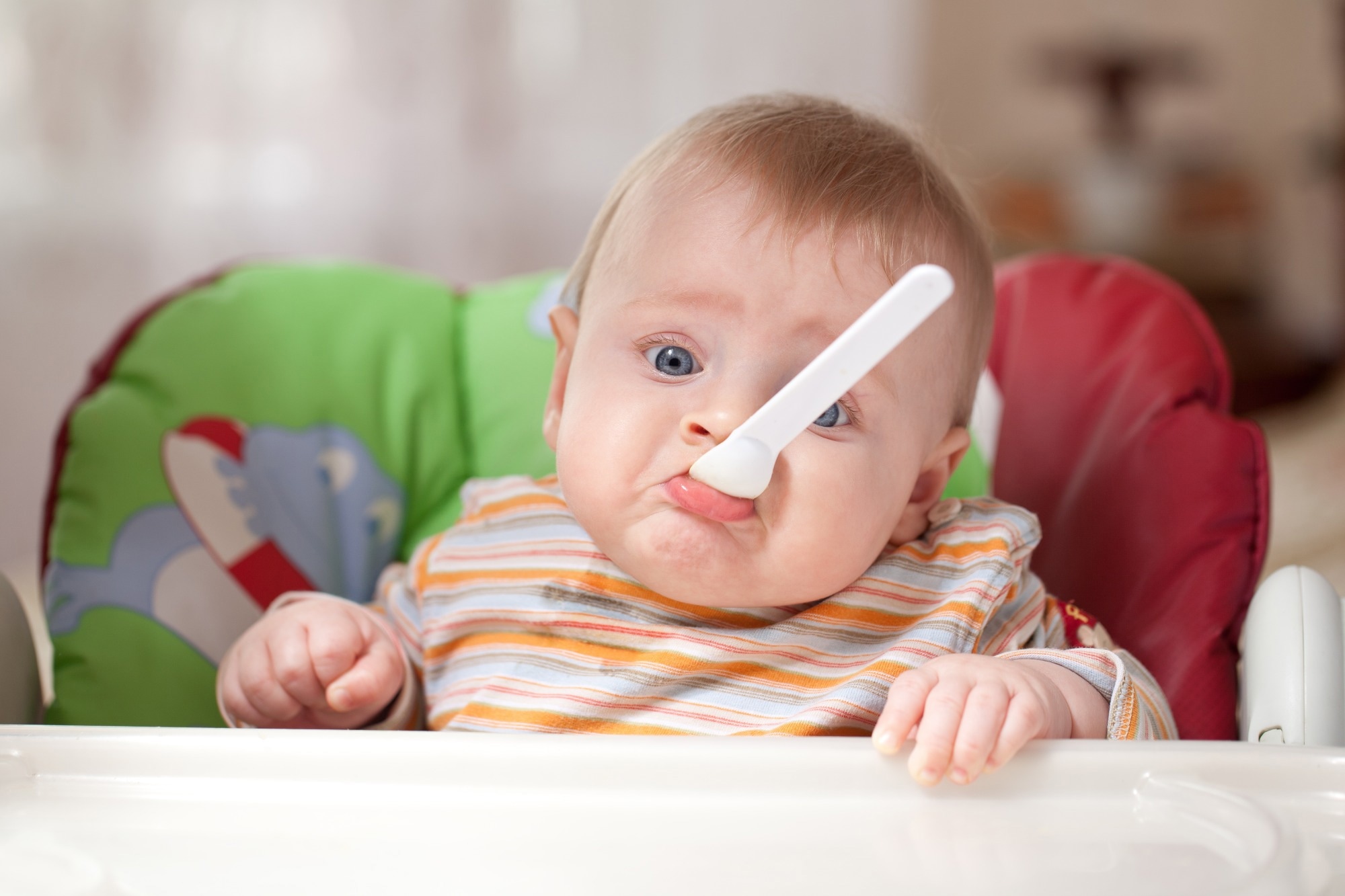A recent review published in the journal Frontiers in Microbiology explores how the oral microbiome develops in infants, focusing on various factors such as early nutrition and environment. Since the condition of the oral microbiome has implications for the child’s well-being throughout life, scientists can use this research to develop more effective health guidelines.
The researchers performed searches in literature published before August 2023 using the keywords “infant/toddler/early life/temporal development” with “oral/saliva/buccal/salivary/plaque/ mouth” and “microbiome/microbiota/bacteria” in Web of Science, PubMed, Google Scholar, Scopus, One Search (English), and ProQuest.
“Compared to the infant gut microbiome, the composition and development of the oral microbiome has received little attention, resulting in a poor understanding of this important environment.”
 Image Credit: gresei / Shutterstock
Image Credit: gresei / Shutterstock
What is the oral microbiome?
The oral microbiome refers to the community of microorganisms found in various parts of the mouth, including the tongue, teeth, gingiva, palates, and tonsils. These diverse fungi, archaea, protozoa, and bacteria communities are vital for our health. Poor oral microbiome condition is associated with oral diseases, such as tooth decay, and other serious ailments, such as inflammatory bowel disease and rheumatoid arthritis.
Bacteria, such as Staphylococcus epidermidis, begin to colonize oral cavities even before birth. However, the oral microbiome is very dynamic and develops significantly during early life, and by the time the baby is a month old, S. epidermidis has all but disappeared. Soon, various other genera like Gemella and Haemophilus emerge.
During infancy, the microbiome’s composition is quite unstable as the baby’s teeth develop and it is introduced to various new foods. The microbe community becomes more diverse and complex as the baby grows and, over time, becomes more similar to that of its mother or caregiver. It begins to stabilize when the child is around four years old but probably matures to an adult-like microbiome later in life.
Importance of infant diet
Various components of breast milk, including microbes, can influence the development of the oral microbiome. Babies fed breast milk have distinct microbiomes from those given formula, and differences appear within days of birth.
Breastfed babies have more Streptococcus, Neisseria, and Actinobacillus, while babies who are also fed formula have more Haemophilus, Veillonella, and Weeksellaceae. The microbiomes of formula-fed babies were also more species-rich.
Researchers are still unsure about how breast milk shapes the oral microbiome. The bacteria in human milk may be transferred from the mother to the baby during breastfeeding; the oral microbiome in infants is almost indistinguishable from their mother’s milk.
Other than microbes, breast milk also contains human milk oligosaccharides (HMOs), short-chain fatty acids (SCFAs), and antimicrobial proteins. HMOs are prebiotics, which allow bacteria like Bifidobacterium to grow. They may also prevent tooth decay by protecting against S. epidermidis. SCFAs are formed when bacteria in the colon break down dietary fibers. If they are transferred from the mother to the child during breastfeeding, they may influence the oral microbiome by providing a surface for bacteria to colonize. However, they may also reduce the ability of the body to fight bacterial pathogens.
Lactoferrin, lysozyme, and secretory immunoglobulin A (sIgA), which are antimicrobial proteins found in breast milk, can protect children from various diseases. They can affect the oral microbiome by protecting the infant from bacterial, viral, and fungal infections. Scientists have hypothesized that their influence will decrease over time since early breast milk is richer in these proteins than mature breast milk.
How long the baby is breastfed may affect the oral microbiome. Babies who are breastfed longer have less Porphyromonas, which can cause gingivitis and tooth loss. As the babies are introduced to solid food, their oral microbiomes change dramatically, becoming more diverse. Then, they have less Streptococcus mitis and more Gemella, Veillonella, and Fusobacterium.
Dental and respiratory health
Beyond diet, other factors influence the infant’s oral microbiome. Teeth begin to emerge when the baby is six months old, providing a new habitat for bacteria. Studies show that many new species colonize the mouth during this time. The oral microbiome matures further as the baby loses its primary teeth and begins to grow permanent teeth. There is also a complex relationship between tooth decay and the oral microbiome, with each affecting the other.
Bacteria such as Haemophilus and Pseudomonas can move from the infant’s respiratory tract to its mouth during breathing and coughing. They cause influenza and pneumonia in adults and may have a similar effect on infants. Moreover, antibiotics such as amoxicillin reduce bacteria such as Streptococcus and Fusobacterium in the oral microbiome. While the bacterial community seems to partially recover after three weeks, antibiotic use may have long-term effects.
Conclusions
The team outlines clear directions for future work to shed more light on this important topic. They note that there is limited research on how human milk and other factors affect the infant’s oral microbiome. The review recommends future longitudinal studies that collect detailed nutrition, teething, and health data across childhood. Furthermore, it highlights the need for advanced sequencing techniques to differentiate between different Streptococcus species based on the unique effects they have on human health. Additionally, the review points out a significant research gap concerning the influence of human milk’s antimicrobial proteins on the oral microbiome. The ultimate goal is to better understand the oral microbiome’s formation to develop strategies that support both infant and lifelong oral and systemic health.
Source link
credite
